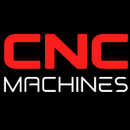Actuator Housings in the Aerospace Industry: Types, Applications, and CNC Manufacturing

Actuator Housings in the Aerospace Industry: Types, Applications, and CNC Manufacturing
Actuator housings are a vital part of many aircraft systems, encompassing everything from landing gear to flight control surfaces. Their primary function is to protect and support the internal mechanisms that convert energy (hydraulic, electric, or pneumatic) into mechanical force. Below, we explore the types of actuator housings used in aerospace, how they operate, the materials and manufacturing methods involved, and how CNC technology plays a critical role in their production.
Understanding Actuator Housings
Actuators in aircraft perform tasks such as moving control surfaces, deploying landing gear, and adjusting engine components. The housing encases an actuator’s core elements, including pistons, gears, motors, or drive screws, shielding them from extreme temperatures, vibration, and environmental factors. By providing structural integrity, the housing ensures actuators can function reliably under high loads and in demanding conditions.
Types and Applications in Aerospace
Different flight control and landing systems require varying sizes and styles of actuator housings. Common configurations include:
Hydraulic Actuator Housings
- Landing Gear Extensions: Robust housings safeguard high-pressure hydraulic pistons and valves that raise and lower landing gear.
- Flight Control Surfaces: Ailerons, flaps, and rudders often rely on hydraulic power for smooth, consistent control response.
- Thrust Reversers: On larger commercial jets, actuators help deploy thrust-reverse mechanisms to decelerate the aircraft upon landing.
Electric Actuator Housings
- Flap Actuation: Smaller, lighter electric actuators can replace traditional hydraulic models, reducing fluid leaks and maintenance requirements.
- Cabin Systems: Actuators used in seats, cargo doors, or passenger stair deployment benefit from streamlined wiring and easier integration.
- Drone and UAV Applications: Drones frequently feature compact electric actuator housings for mission-critical maneuvers in a tight form factor.
Pneumatic Actuator Housings
- Auxiliary Systems: Door actuators, cargo bay latches, and emergency slide deployments are among the areas where pneumatic solutions excel.
How Actuator Housings Work
Actuator housings provide a protective shell for the actuator’s internal mechanism. When a control signal is received—via hydraulic pressure, electrical current, or compressed air—the internal components convert this energy into motion. The housing not only bears the structural stresses exerted on the actuator but also prevents external contaminants like dust, moisture, and debris from affecting performance. Effective sealing is essential, ensuring fluids or lubricants do not escape and foreign particles are kept out.
How Actuator Housings Are Made
Manufacturing processes for actuator housings typically involve several key stages, starting with materials selection:
- Material Choice
- Aluminum Alloys: Lightweight and corrosion-resistant, ideal for many aerospace applications where reduced mass is critical.
- Titanium: Provides a strong strength-to-weight ratio and high-temperature tolerance, essential for housings near engines or in high-stress zones.
- Stainless Steel: Common where extra durability is required and weight penalties are manageable, such as heavily stressed landing gear actuators.
- Initial Forming
- Forging or Casting: Large or complex housings are often forged or cast into near-net shapes to reduce subsequent machining.
- Sheet Metal Forming: Smaller or simpler housings can be formed from sheet metal and then welded or riveted together.
- CNC Machining
- Milling and Turning: After forming, high-precision cutting removes excess material and finalizes internal bores, mounting flanges, and external surfaces.
- Threading and Hole Drilling: CNC systems ensure consistent fastener holes and threaded connections, critical for sealing and alignment.
- Heat Treatment and Surface Protection
- Quenching/Tempering: Aluminum or steel housings may undergo heat treatments to achieve target hardness or tensile strength.
- Coatings: Anodizing (for aluminum) or specialized plating (for steel/titanium) helps defend against wear and corrosive environments.
- Quality Control
- Nondestructive Testing (NDT): Methods like ultrasonic, dye penetrant, or radiographic inspections detect hidden flaws that could lead to failures in flight.
- Dimensional Verification: Coordinate measuring machines (CMM) confirm each housing meets strict aerospace tolerances.
The Role of CNC Machining
Precision and Repeatability
CNC (Computer Numerical Control) machining is indispensable in aerospace manufacturing. It offers micrometer-level accuracy, which ensures each actuator housing meets design tolerances for secure sealing and correct alignment of components like pistons or drive screws. By programming tool paths and cutting parameters, engineers can replicate tight dimensions across multiple batches.
Complex Geometries
Modern aerospace systems often incorporate intricate designs, including internal channels and curved surfaces. Multi-axis CNC machines are capable of milling these complex shapes in a single setup, reducing lead times and minimizing human error.
Reduced Weight
Aerospace actuators must be as light as possible without compromising strength. CNC machining allows engineers to selectively remove material from non-critical areas of the housing, optimizing weight while still maintaining the necessary load-bearing capacity.
Conclusion
Actuator housings are a cornerstone of reliable and efficient operation in aircraft, covering everything from landing gear deployment to flight control movement. As the aerospace industry continues its shift toward greater electrification and lightweight designs, the demand for high-precision housings grows. Whether employing hydraulic, electric, or pneumatic actuation, robust housings crafted from aluminum, titanium, or steel ensure that these systems can endure harsh conditions and extreme loads. Coupled with CNC machining for consistent quality and complex geometries, actuator housings remain an essential, ever-evolving component in modern aerospace engineering.


